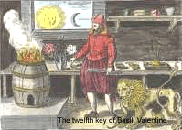Basic Reactions Of Organic Chemistry
In the Morrison and Boyd tradition
The generation that came of age during the Great Depression fought and won World War Two, both on the home front and overseas. When the war was over they were overdue for normalcy. And, normalcy meant having children and raising families. Being survivors, they taught their children that success was a primary objective – and that success could be had through hard work.
Their children (there were a lot of them) came of age in the 1950’s and 1960’s. This generation was to fight and win the cold war, both on an economic front and a technological front. In 1960 John Kennedy began an initiative in public education that was to focus on science and math skills excellence.
A glut of prospective scientists, engineers, and medical doctors entered the nation’s universities in the sixties and early seventies. Overloaded academic programs adopted a policy which targeted a 60% per year flunk-out rate in a student’s first two years. This was accomplished by making the first four semesters of undergraduate studies in the sciences as difficult as possible.
The introductory organic chemistry text used by many of these colleges and universities was Organic Chemistry by Robert Thornton Morrison and Robert Neilson Boyd (Boston: Allyn and Bacon, Inc.) This text used a functional group approach and focused on synthesis and structure property relationships. The outline given here is from my notes (1973) and review of my text. It is a good survey of the basic reactions of organic chemistry and a good refresher for those who have been away from organic chemistry for a while.


















